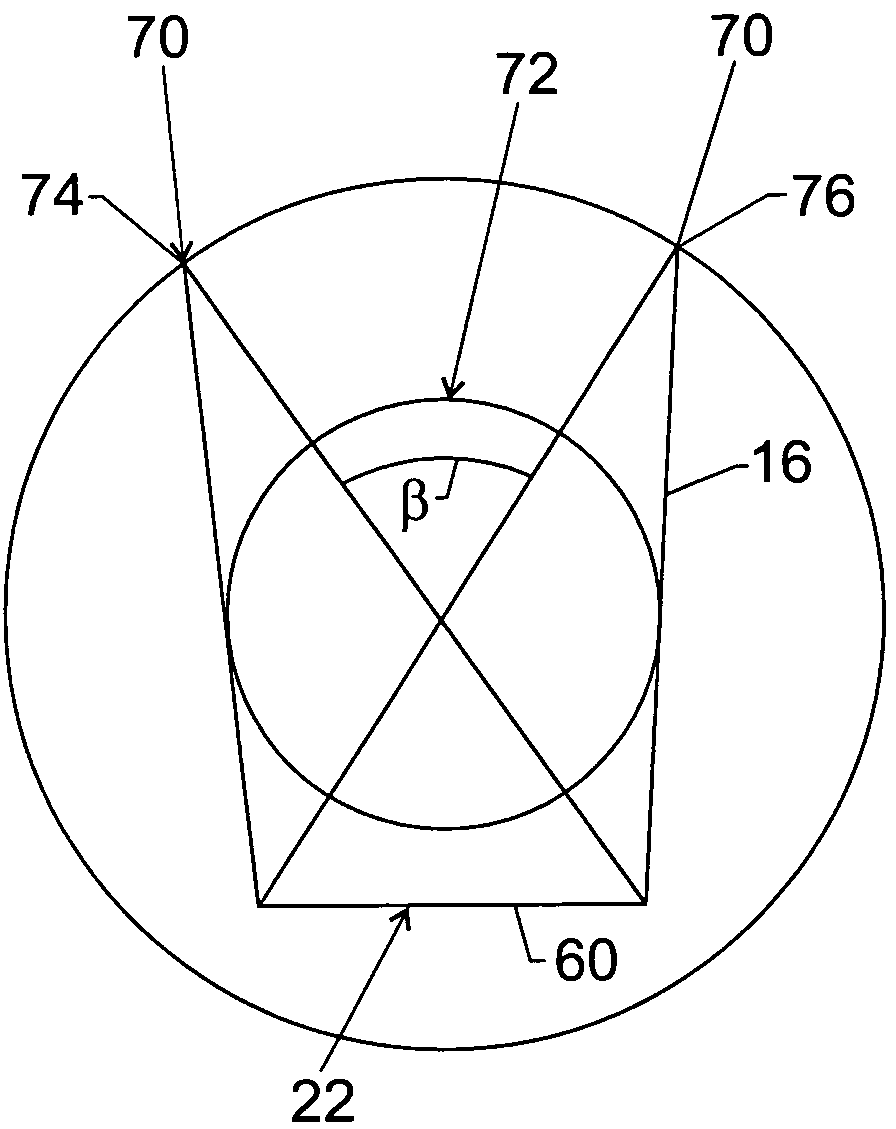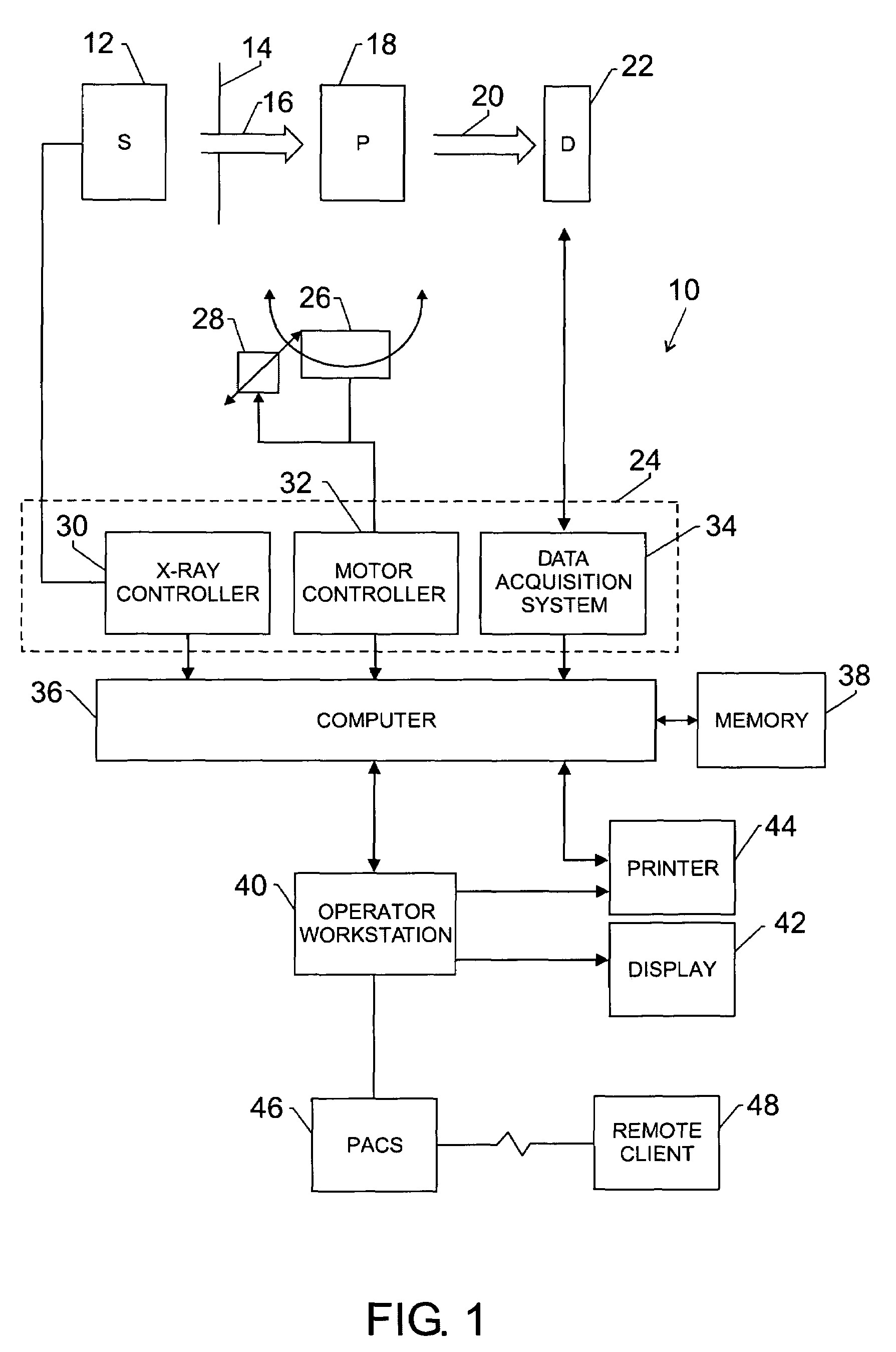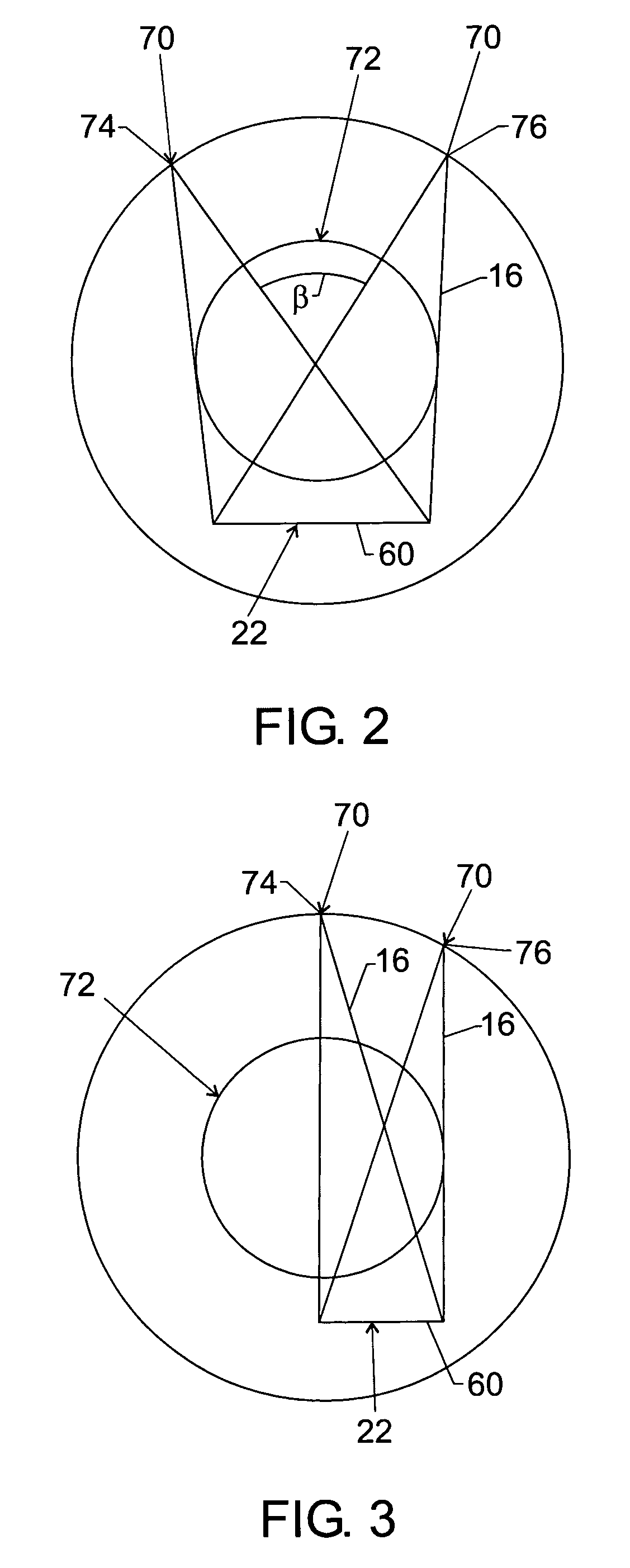Method and system for imaging using multiple offset X-ray emission points
a technology of offset x-ray and emission point, applied in the field of non-invasive imaging, can solve the problems of large detectors, inability to produce large detectors, large detectors and associated acquisition electronics, etc., and achieve the effect of small in-plane exten
- Summary
- Abstract
- Description
- Claims
- Application Information
AI Technical Summary
Benefits of technology
Problems solved by technology
Method used
Image
Examples
Embodiment Construction
[0018]FIG. 1 illustrates diagrammatically an imaging system 10 for acquiring and processing image data. In the illustrated embodiment, system 10 is a computed tomography (CT) system designed to acquire X-ray projection data, to reconstruct the projection data into an image, and to process the image data for display and analysis in accordance with the present technique. Though the imaging system 10 is discussed in the context of medical imaging, the techniques and configurations discussed herein are applicable in other non-invasive CT imaging contexts, such as baggage or package screening.
[0019]In the embodiment illustrated in FIG. 1, CT imaging system 10 includes a source 12 of X-ray radiation. As discussed in detail herein, the source 12 of X-ray radiation may consist of two or more discrete, i.e., separated, emission points. For example, a conventional X-ray tube may be equated with a single emission point. Alternatively, an X-ray source such as a solid-state X-ray source having f...
PUM
| Property | Measurement | Unit |
|---|---|---|
| radius | aaaaa | aaaaa |
| radius | aaaaa | aaaaa |
| CT imaging | aaaaa | aaaaa |
Abstract
Description
Claims
Application Information
 Login to View More
Login to View More - R&D
- Intellectual Property
- Life Sciences
- Materials
- Tech Scout
- Unparalleled Data Quality
- Higher Quality Content
- 60% Fewer Hallucinations
Browse by: Latest US Patents, China's latest patents, Technical Efficacy Thesaurus, Application Domain, Technology Topic, Popular Technical Reports.
© 2025 PatSnap. All rights reserved.Legal|Privacy policy|Modern Slavery Act Transparency Statement|Sitemap|About US| Contact US: help@patsnap.com



